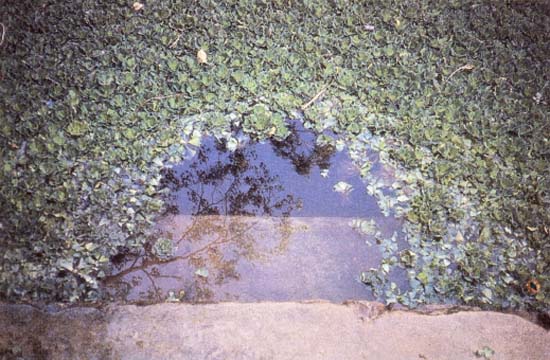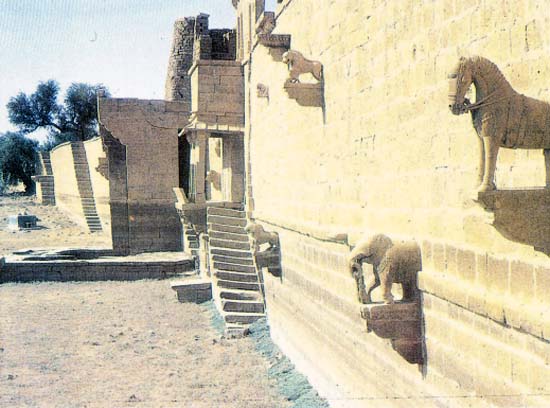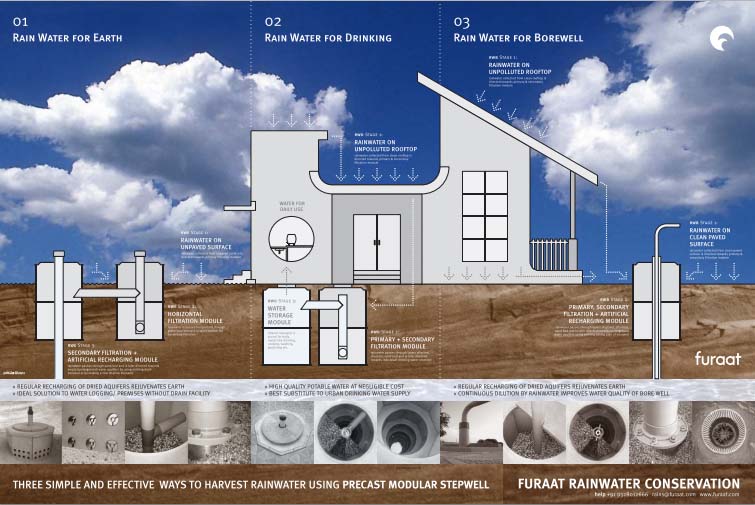Rebuilding Rainwater Collection in India
From one conservationist’s perspective, harvesting rainwater doesn’t mean high-tech strategies—traditional techniques have been around for centuries
/https://tf-cmsv2-smithsonianmag-media.s3.amazonaws.com/filer/20120514123007indiastepwells_470.jpg)
In this series on design for water scarcity, we’ve been talking primarily about the American West. At the Arid Lands Institute, the southern California design lab that has appeared in most of these stories, focusing on this limited geographic region gives designers a petri dish within which to cultivate solutions that might later be applied elsewhere. “What looks like a kind of localism,” points out ALI founder-director Hadley Arnold, “is a very careful, intentional commitment to deindustrializing water systems in the developed world as a sort of twin separated at birth from how you bring potable water, sanitation and hygeine, and careful water management to the developing world.”
Of course one of the most significant differences between addressing water scarcity in the developed versus the developing world is that in the U.S., scarcity remains somewhat abstract to most people. Clean drinking water still flows from the tap. Agricultural fields still turn green and produce food. Meanwhile in India, the consequences of depleted aquifers are plainly visible.
This week on the public radio show Marketplace, host Kai Ryssdal interviewed Rajendra Singh, an Indian conservationist whose work restoring water supplies to parts of Rajasthan has earned him the nickname “The Waterman.” Singh was educated in medicine, but he discovered that applying his training in the real world would be useless if the water crisis wasn’t addressed first. He spoke of traveling to Rajasthan and encountering severe loss of groundwater, the drying up of wells, and the decline of wildlife and agriculture as a result. He undertook the reestablishment of a traditional method of rainwater harvesting, digging a collection pond that would hold rainwater that fell during the monsoon.
The outcome of his work has been dramatic. Where rainwater can be collected and retained, farms have become productive, animals have come back, and very imporantly, aquifers have been recharged, and groundwater and river levels have risen. Once the first collection pond’s value was proven, others were dug. “Community-driven, decentralized water management is the solution for my country,” Singh said in the interview. It’s also the solution most commonly proposed by designers and conservationists in the U.S. From Singh’s perspective, that doesn’t necessarily mean high-tech strategies—traditional rainwater harvesting techniques like the one he implemented have been around for centuries.

Hyacinth growing over the surface of water (image from Anupam Mishra's book, The Radiant Raindrops of Rajasthan)
Singh’s perspective is echoed in a TED talk on the subject of water in India, delivered by Anupam Mishra, also a conservationist with a long history of water management advocacy. In his presentation, Mishra pointed out that 800 years ago, in what was at the time one of the country’s most dense and important hubs, each house in a village collected its own rainwater. But large-scale, government-sponsored hydroengineering projects changed that, attempting to import piped water across vast distances.
As has been argued about the American West, these megaprojects set citizens up for dependence on infrastructure that might not always deliver. In India, the wide, open canals designed to bring water from the Himalayas were quickly filled with water hyacinths or overtaken by sand and wildlife, eliminating the flow of water to its intended destination.

Sculptures designed to indicate water levels in rainwater catchment areas (image from Anupam Mishra's book, The Radiant Raindrops of Rajasthan)
Mishra’s presentation emphasized that some of the most effective models of water management in India are also some of the oldest and most beautiful. He showed how architecture and sculpture were integrated into the water infrastructure, melding public art with utility, as has also been seen in Europe. The stepwells (or stepped ponds) of western India are monumental examples of precise, pre-industrial design, with symmetrical, geometric patterns of stairs leading down into deep water storage vaults. When the water supplies were abundant, the stairs would be submerged, and as the water went back down, the steps became visible and usable. Likewise, stone animal heads were installed at various heights inside rainwater collection tanks to indicate the volume of water inside and the length of time that stock would last.

Schematic of the Furaat modular rainwater harvesting tank (image from company website)
Today, young Indian engineers are designing mass-produced, modular versions of these tanks made with precast concrete and other industrial materials. A company called Furaat popped up in 2008 with a design that echoed the old stepwells. Their concept promised to recharge groundwater as well as purify collected rainwater for safe drinking. From their presentation materials it’s clear that the engineers saw a business opportunity in addressing the water crisis, but it’s unclear whether the entity has flourished.
Anupam Mishra’s attitude seems to be that commercializing the approach to water management doesn’t lead to success, as it overlooks what’s appropriate to individual locations and climates. “We had full-page advertisements some thirty or twenty-five years ago when these canals came,” Mishra recounts, “They said, ‘Throw away your traditional systems, these new cement tanks will supply you piped water.’ It’s the dream, and it became a dream also, because soon the water was not able to reach these areas, and people started renovating their own structures.”
This doesn’t mean that today’s designers and engineers have no role in improving Indian citizens’ access to water. Many of the examples from the Indian desert still begin with rainwater harvesting, but implement more modern technology between collection and consumption. A partnership between global design firm IDEO and social entrepreneurship engine Acumen Fund introduced collection tanks in Rajasthan that also provided filtration, putting clean drinking water within a short distance of all members of a village. The tanks can’t hold an aesthetic candle to the stepwells of the 11th century, but they represent a useful bridge between traditional practices and modern capabilities.

Jal Bhagirathi Foundation's clean drinking water tanks (image from Ripple Effect Global)
If you have 18 minutes to spare, Anupam Mishra’s TED talk is worth watching (also embedded above). The next and final post in this series will return to the U.S. to look at some of this country’s oldest water management and land use practices, and how design could improve conditions on the reservation.
/https://tf-cmsv2-smithsonianmag-media.s3.amazonaws.com/accounts/headshot/sarah-rich-240.jpg)
/https://tf-cmsv2-smithsonianmag-media.s3.amazonaws.com/accounts/headshot/sarah-rich-240.jpg)